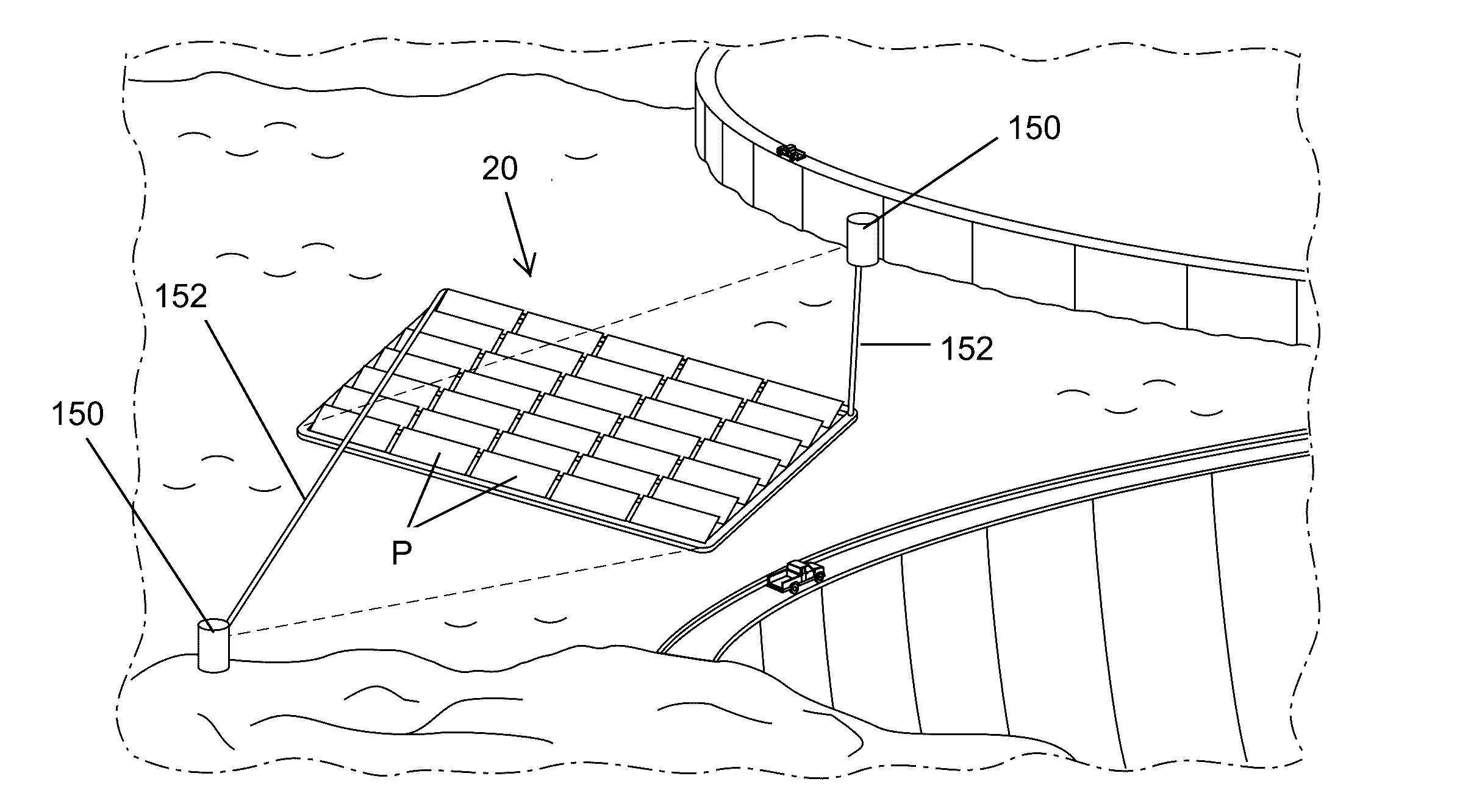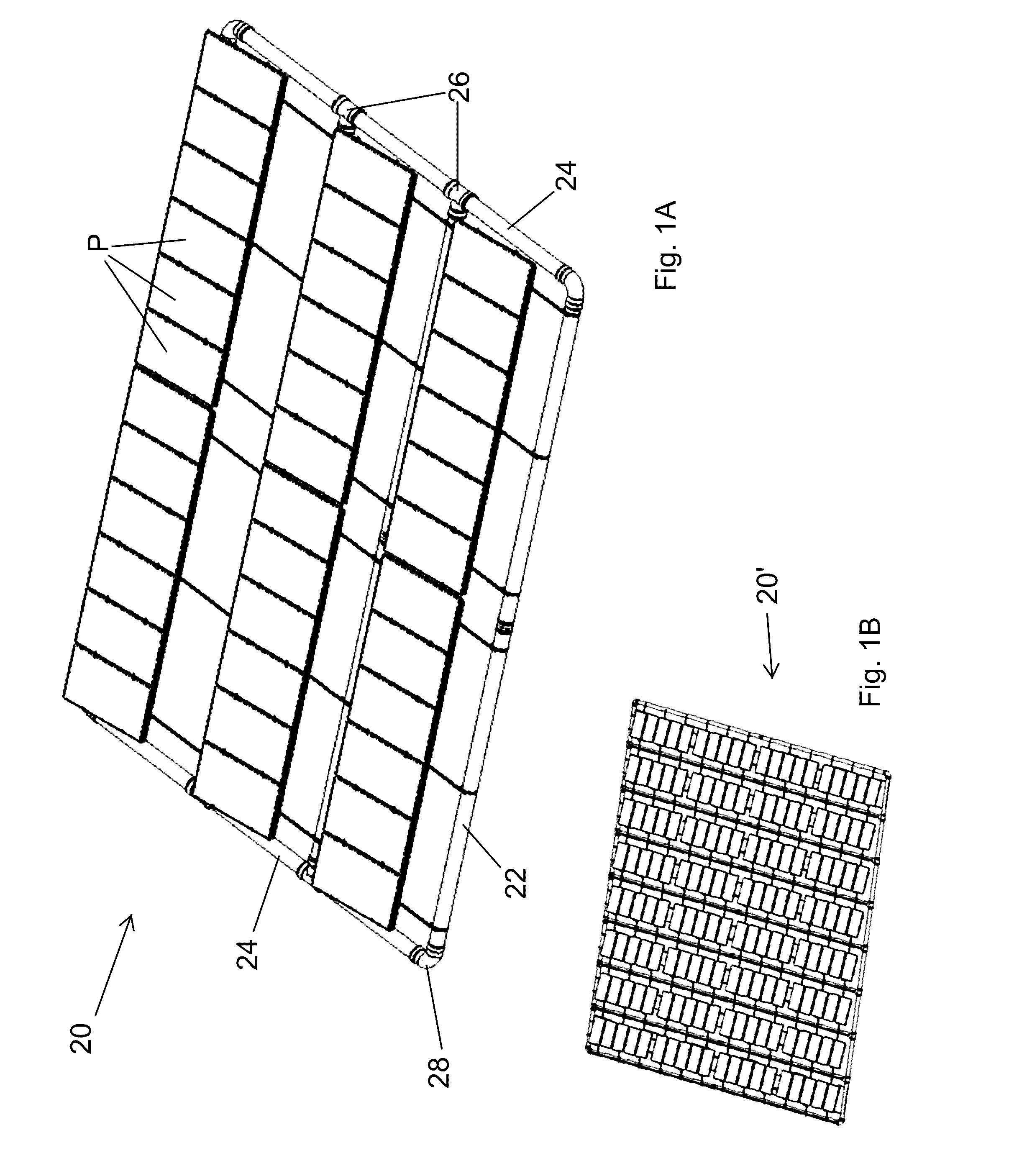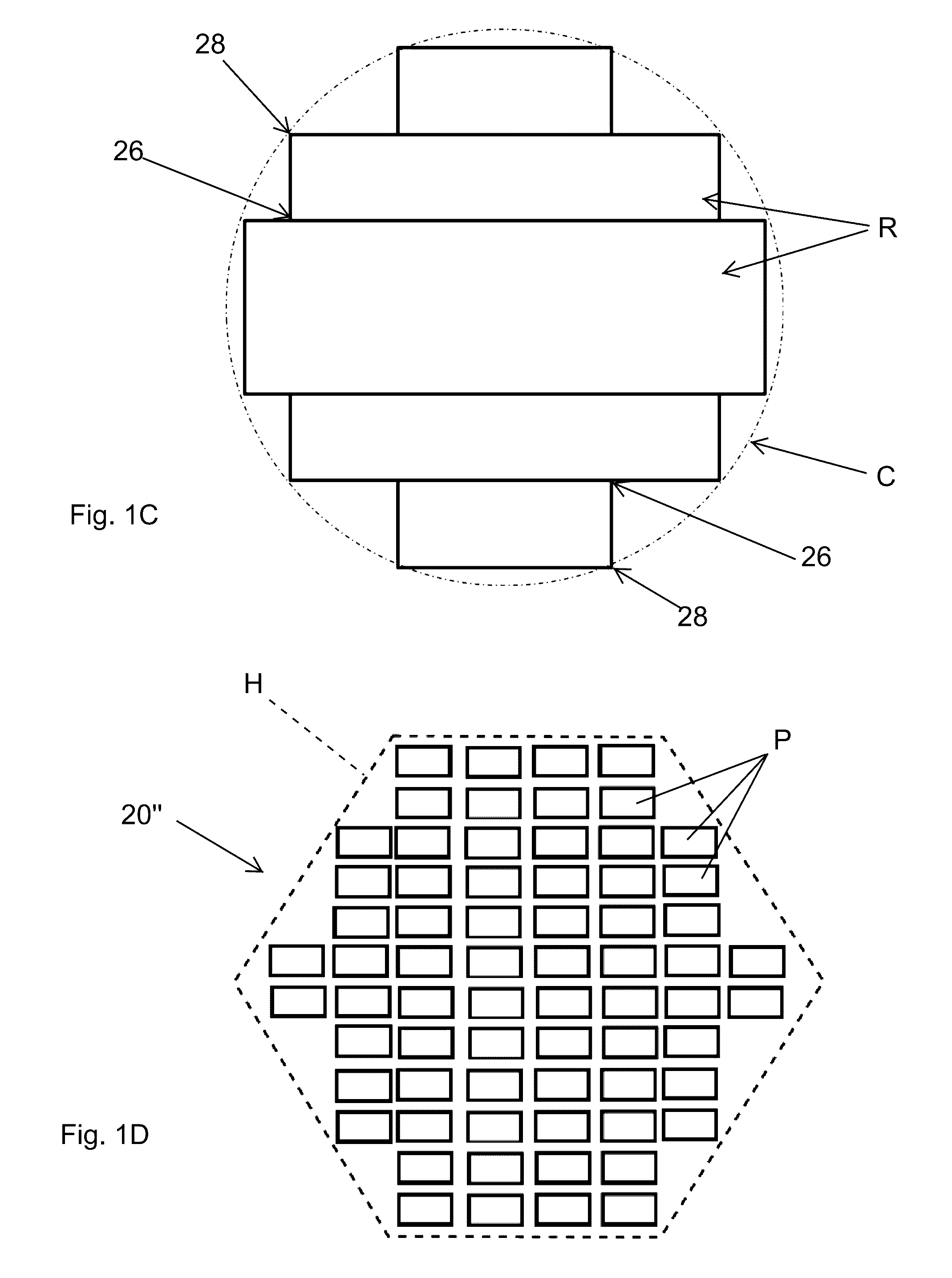Floating solar panel array with one-axis tracking system
a solar panel and tracking system technology, applied in the field of photovoltaic systems, can solve the problems of negative environmental impact and huge land area
- Summary
- Abstract
- Description
- Claims
- Application Information
AI Technical Summary
Benefits of technology
Problems solved by technology
Method used
Image
Examples
Embodiment Construction
[0038]The present application discloses an or several arrays of floating solar panels with a one-axis tracking system to cause the panels to face the sun at all times of the day. The solar panels are mounted over a series of connected rows and columns of buoyant flexible pipes forming a buoyant closed loop shape around an outer periphery.
[0039]The arrays of floating solar photovoltaic panels may be utilized on lakes, water dams, mine tailings or other water reservoirs. The arrays may also later be deployed on the sea water in calm areas. The panels are installed by floating arrays composed of a large number of panels, typically around 1,000 panels. Each array is made of parallel lines of flexible pipes, making a closed loop shape on an outer periphery of flexible pipes. The flexible pipes are connected by electro-welded or thermo-welded fittings with elbow connections at corner junctions of two pipes and T-fittings at junctions of three pipes, as will be seen. Each array is holding ...
PUM
 Login to View More
Login to View More Abstract
Description
Claims
Application Information
 Login to View More
Login to View More - R&D
- Intellectual Property
- Life Sciences
- Materials
- Tech Scout
- Unparalleled Data Quality
- Higher Quality Content
- 60% Fewer Hallucinations
Browse by: Latest US Patents, China's latest patents, Technical Efficacy Thesaurus, Application Domain, Technology Topic, Popular Technical Reports.
© 2025 PatSnap. All rights reserved.Legal|Privacy policy|Modern Slavery Act Transparency Statement|Sitemap|About US| Contact US: help@patsnap.com



